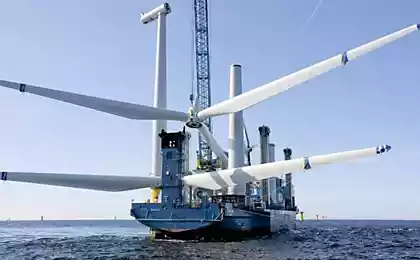465
In Granada launched a prototype system for power generation from waste of olive oil production
Four million nine hundred fourteen thousand three hundred thirty eight
A small prototype plant, which turns waste of olive oil production into electricity, recently was put into operation at the facility in Granada.
The installation, which is the result of studies of the Royal Institute of technology (KTH), culminating in the end of last year, able to generate electricity, which is used to partially power the plant for the production of olive oil.
As the developers of the system, this technology may be the solution for the disposal of toxic waste left over after extracting the oil. The current prototype is capable of producing 1 kW of power, but the project partners, including the company Powercell Sweden AB and plan to apply for funding of a larger system with a capacity of 200 kW that will generate electricity sufficient to provide 50 percent of the energy needs of the enterprise in which the system is installed.
The manufacturing process developed by researchers of the Royal Institute of technology, consists of three stages. In the first stage the raw materials are crushed and boiled in a special pot, with the release of biogas. In the second stage, biogas is converted to carbon dioxide and hydrogen, and in the third stage of the gas mixture added oxygen, this chemical reaction occurs producing heat and electricity. According to the developers, after going through all three stages of the process, toxic waste is exhausted, and secure "dry residue" can be disposed of in landfill, without causing damage to the environment and human health.
Well, given that waste from the production of olive oil often contain significant amounts of pesticides, new waste disposal process is of great potential use, despite the relatively high production costs.
photographic material: cleantechnica.com
Source: www.cheburek.net
A small prototype plant, which turns waste of olive oil production into electricity, recently was put into operation at the facility in Granada.
The installation, which is the result of studies of the Royal Institute of technology (KTH), culminating in the end of last year, able to generate electricity, which is used to partially power the plant for the production of olive oil.
As the developers of the system, this technology may be the solution for the disposal of toxic waste left over after extracting the oil. The current prototype is capable of producing 1 kW of power, but the project partners, including the company Powercell Sweden AB and plan to apply for funding of a larger system with a capacity of 200 kW that will generate electricity sufficient to provide 50 percent of the energy needs of the enterprise in which the system is installed.
The manufacturing process developed by researchers of the Royal Institute of technology, consists of three stages. In the first stage the raw materials are crushed and boiled in a special pot, with the release of biogas. In the second stage, biogas is converted to carbon dioxide and hydrogen, and in the third stage of the gas mixture added oxygen, this chemical reaction occurs producing heat and electricity. According to the developers, after going through all three stages of the process, toxic waste is exhausted, and secure "dry residue" can be disposed of in landfill, without causing damage to the environment and human health.
Well, given that waste from the production of olive oil often contain significant amounts of pesticides, new waste disposal process is of great potential use, despite the relatively high production costs.
photographic material: cleantechnica.com
Source: www.cheburek.net
Scientists have created a plant for the production of electricity from living plants to power streetlights
By 2020 people will spend most of your time in virtual reality






















